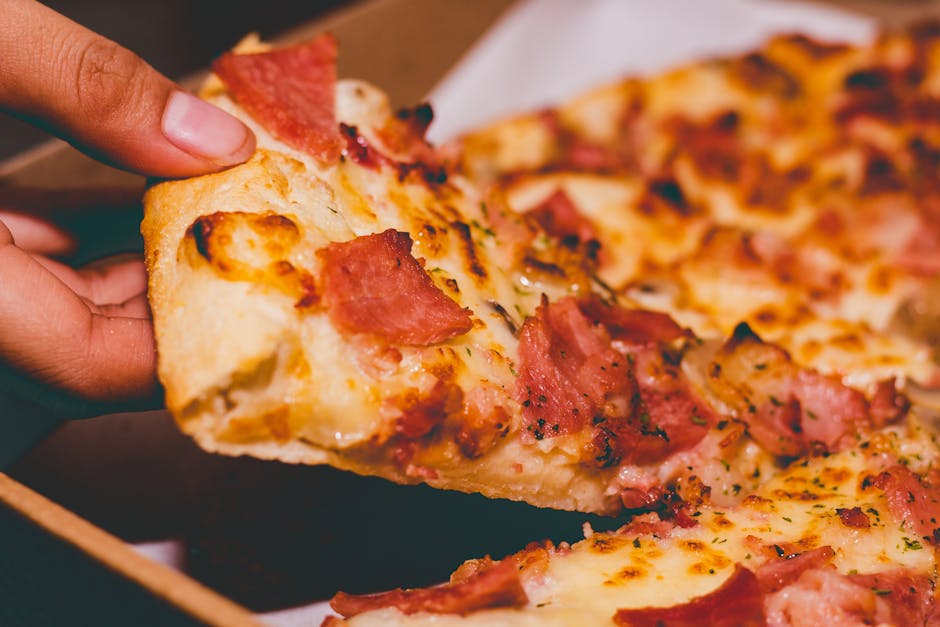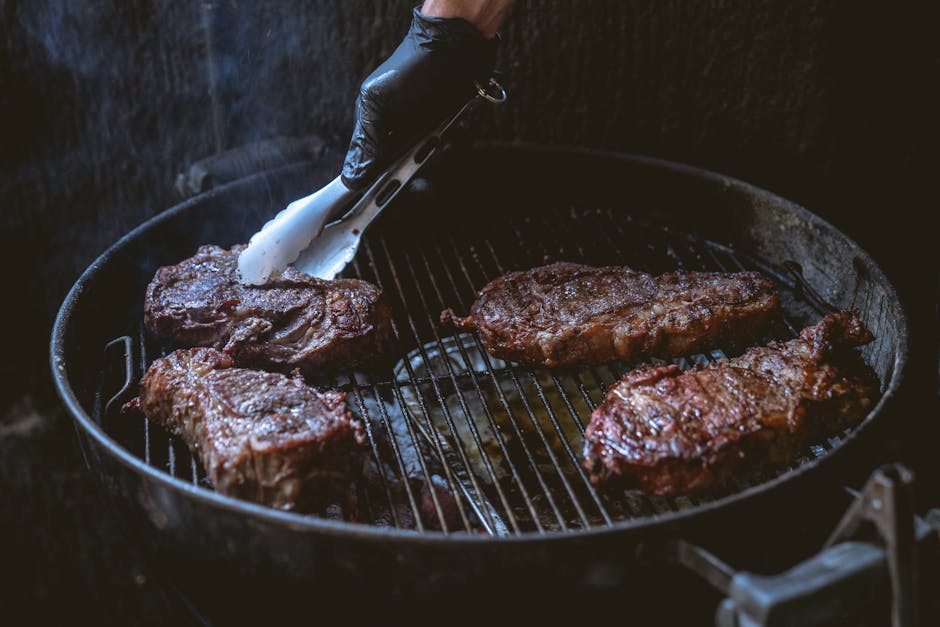The Maillard Reaction: What Really Makes It Golden
The Maillard reaction is the science behind that crave worthy brown crust. When amino acids from proteins meet reducing sugars at high heat generally in the 300°F to 500°F range they start reacting and rearranging into hundreds of new compounds. These compounds are what give seared food that deep, savory, slightly nutty flavor. It’s complex chemistry, but in the kitchen, it just tastes right.
Now here’s the line a lot of home cooks blur: browning isn’t burning. Toasted is good blackened is not. The sweet spot is where surface moisture has evaporated, the surface dries out, and the Maillard reaction has room to fire off. Push the heat too low, and the food steams. Too high, and carbon takes over.
The goal is control not rushing the heat, not babysitting too much. Let the surface sit, untouched, in the proper temp zone. You’ll get that tasty crust without crossing into bitterness. Just respect the range and trust that golden brown isn’t just a color it’s a signal that flavor is peaking.
Moisture Control: Your First Battle
If your meat is wet, you’re steaming it not searing it. That golden crust you’re chasing? It won’t happen if surface moisture has to boil off first. Water turns to steam at 212°F, but the Maillard reaction the chemical dance that gives meat its deep brown flavor doesn’t kick in until closer to 300°F. So all that surface moisture is just slowing you down.
This is why patting meat dry with paper towels before it hits the pan is non negotiable. For next level dryness, air chilling in the fridge for a few hours (or even overnight) pulls out even more surface moisture, especially on poultry. Air dried skin crisps up fast and stays that way.
As for salting: timing matters. If you salt meat right before cooking, the crystals draw moisture to the surface bad news for searing. Instead, salt early (an hour or more ahead) or much later, after the sear. Recent studies confirm it: pre salting and letting meat rest gives the salt time to draw moisture, then reabsorb it, leaving the surface dry and the interior seasoned. Smart prep leads to better browning.
Moisture is the enemy. Control it from the start, and the sear takes care of itself.
Pan Choice and Heat Management
Choosing the right pan and mastering how to use it is essential for achieving that restaurant quality sear. Different materials bring out different results, and understanding heat retention and oil behavior can make or break your crust.
Which Pan Holds Heat Best?
When it comes to consistent, high heat cooking, not all pans are created equal. Here are the top contenders:
Cast Iron:
Excellent heat retention and even distribution
Ideal for thick cuts that need sustained heat
Requires proper preheating to avoid hotspots
Carbon Steel:
Heats faster than cast iron, but retains heat slightly less
Lightweight and responsive great for quick sears
Like cast iron, it needs seasoning over time
Stainless Steel:
Responsive to temperature changes
Doesn’t retain heat as well as cast iron or carbon steel
Best for thinner cuts and quick, even browning
Mastering the Preheat
Preheating your pan isn’t a luxury it’s non negotiable. A cold pan leads to gray, soggy meat. But how long is long enough?
For cast iron, preheat on medium high heat for 5 7 minutes
For carbon steel or stainless steel, 3 5 minutes usually does the job
Use the water droplet test: A drop should sizzle and “dance” across the surface that’s your green light
Tip: Don’t rely just on time. Pay attention to cues like the color of the metal and how oil behaves when added.
Oil Smoke Points: Choose Wisely
Different oils react differently at high temps. Searing demands oils that won’t break down under the heat.
Canola Oil:
Neutral flavor, high smoke point (~400°F)
Budget friendly and reliable
Avocado Oil:
Extra high smoke point (~520°F)
Mild taste, good for aggressive sears or cast iron
Ghee (Clarified Butter):
Smoke point around 450°F
Adds richness and subtle flavor best for finishing touches
Avoid olive oil for high heat searing it smokes too early and can leave a bitter aftertaste.
In Summary
Use cast iron or carbon steel for the best heat control
Always preheat test with water if unsure
Stick with high smoke point oils to prevent unwanted bitterness
Good equipment doesn’t make a great cook but knowing how to use it can set you apart.
Technique That Delivers the Crust

Achieving a picture perfect sear isn’t just about the right pan or temperature it boils down to technique. Small decisions at the stove can have a big impact on flavor, texture, and visual appeal.
Don’t Press Down with That Spatula
It might be tempting to press your steak or burger flat to speed up cooking, but all you’re doing is squeezing out valuable juices and sabotaging your crust.
Pressing expels moisture moisture disrupts searing
You’ll end up steaming the meat, not crisping it
Less juice means less flavor and dry results
Tip: Let the heat do the work. Hands off is the rule here.
The Patience Rule: Don’t Flip Too Soon
Flipping too early is one of the most common searing mistakes. The surface needs time to brown and sticking is your clue that it’s not there yet.
Allow 3 5 minutes per side, depending on thickness and heat level
If it sticks to the pan, it’s not ready to flip
A dark brown crust tells you the Maillard reaction is fully activated
Rest to Lock It In
Once your cut is seared to perfection, step away. Literally. Resting is where flavor and moisture consolidate.
Let meat rest for at least 5 10 minutes after searing
This allows juices to redistribute evenly
Resting prevents a pool of flavor from spilling out when sliced
Final touch: Tent loosely with foil while resting don’t trap steam, or you’ll soften that hard earned crust.
Bonus: Oven Finish for Thickness
Thick cuts of meat don’t play by the same rules. If you go straight to high heat, you risk charring the outside while the inside stays stubbornly raw. That’s where reverse searing earns its keep. Here’s the basic idea: start low, finish high.
First, slow roast your steak (or chop, or roast) in the oven at around 225 275°F until it’s just shy of your target internal temp. For a medium rare steak, pull it around 115 120°F. Then hit it with a hard, fast sear in a blazing hot pan. Cast iron works best. You’re looking for a quick crust 30 to 90 seconds per side and that’s it. You get even doneness edge to edge and all the flavor of a good sear without drying it out.
When’s the best time to transfer to the oven? Right after seasoning and bringing your meat to room temp. Let it cook slow and steady on a wire rack. A meat thermometer takes the guesswork out. Your finish temperature for medium rare should be about 130 135°F.
Using the oven this way frees up space on the stovetop and gives you more control. To make the most of it, brush up on oven efficiency here: How to Use Your Oven Efficiently for Better Baking Results.
Common Mistakes That Kill Your Sear
Even with the right ingredients and equipment, small errors can sabotage your sear. Here are the critical missteps to avoid if you’re aiming for that golden brown, restaurant style crust.
Crowding the Pan: Let It Breathe
When you pack too much protein into a pan, you’re not searing you’re steaming.
Why it matters: Heat drops, and water released from proteins creates steam, preventing proper browning.
The fix: Cook in batches. Leave at least 1 inch of space between items for even exposure to heat.
Tip: If the pan isn’t big enough, use two your crust will thank you.
Wrong Pan for the Job: Skip Non Stick
Non stick pans may be convenient, but they’re not your friend here.
Problem: Non stick coatings limit the temperature you can safely reach. You’ll get heat, but not high enough for deep Maillard browning.
Better options:
Cast iron for superior heat retention
Stainless steel for excellent browning and control
Carbon steel for lightweight precision
Ignoring Carryover Cooking
Cooking doesn’t end when the pan leaves the heat it continues.
What is it? Carryover cooking is the rise in internal temperature after removal from heat, often 5 10 degrees depending on the cut.
Why it matters: Without accounting for it, your perfectly seared medium rare steak turns medium or worse.
Solution: Use a meat thermometer and pull your protein off the heat just below your target final temp.
Mastering these small yet crucial details will make the difference between a mediocre sear and one worth serving with pride.
Final Touches That Make It Restaurant Level
Once you’ve nailed the sear, don’t let the finishing moves undo the good work. Dry rubs? Keep them light on sugar. Sugar burns fast and can wreck a crust before the interior even thinks about being done. Stick to low sugar blends or layer sweet elements after the sear. As for marinades, avoid anything too wet or acidic right before your meat hits the pan. Moisture is the enemy of crust, and acids can start toughening protein if left too long.
Butter basting is where things get elevated but timing matters. Start your sear dry, no butter. Once you flip and the crust is doing what it’s supposed to do, add cold butter, crushed garlic, and a few aromatics (thyme, rosemary, peppercorns). Tilt, baste, finish. Too early and the butter browns too fast; too late and you miss the flavor window.
And then, timing the finish. That perfect bite the one that people talk about later comes down to hitting the proteins just right. Use a meat thermometer if you’re serious. Pull it a few degrees before target; carryover heat does the rest. Then rest it. No cutting, no peeking. Let it settle so the juices don’t bail out when your knife goes in. All of it adds up to that one bite where crust, color, aroma, and tenderness show up at the same time.
